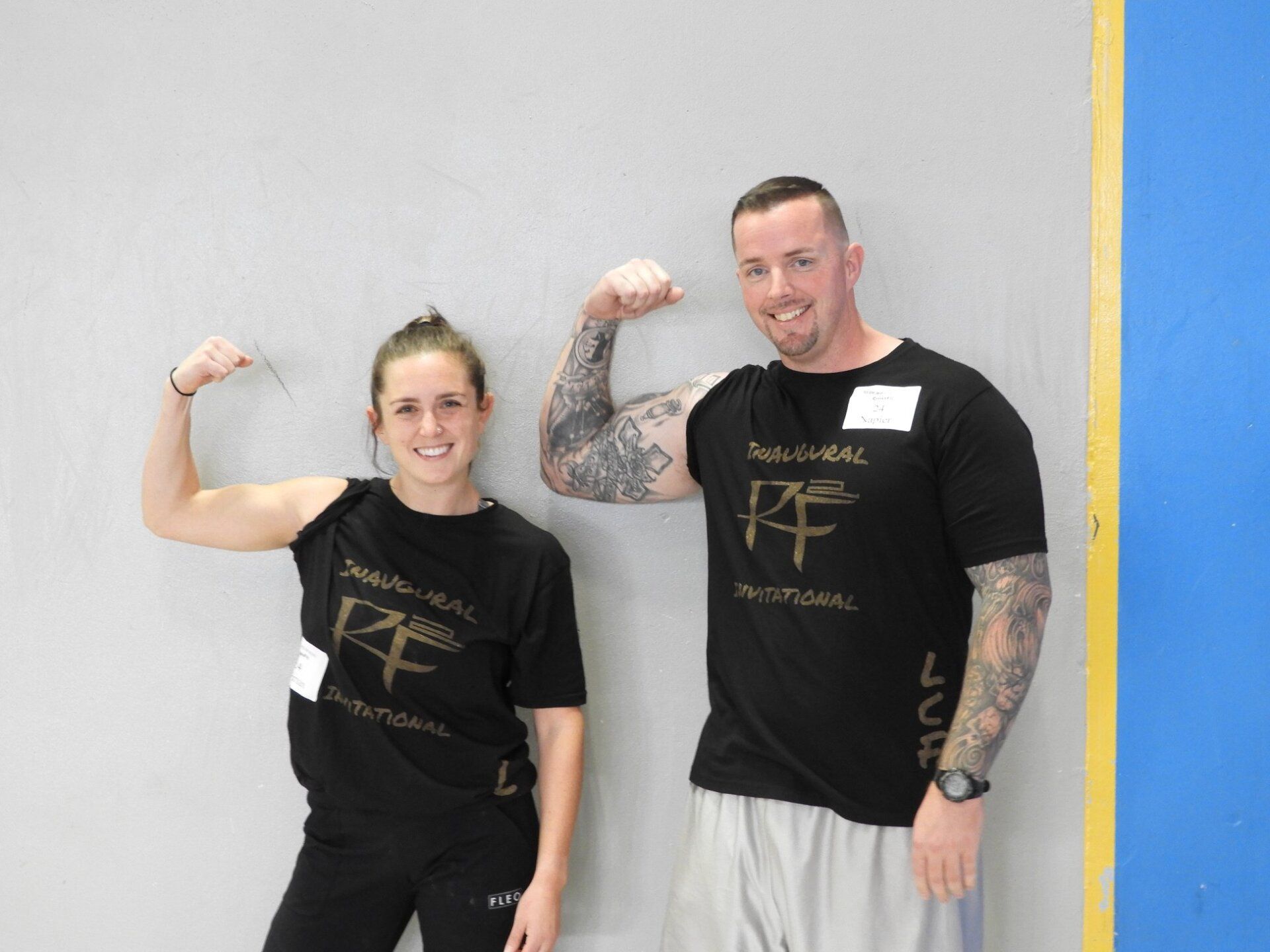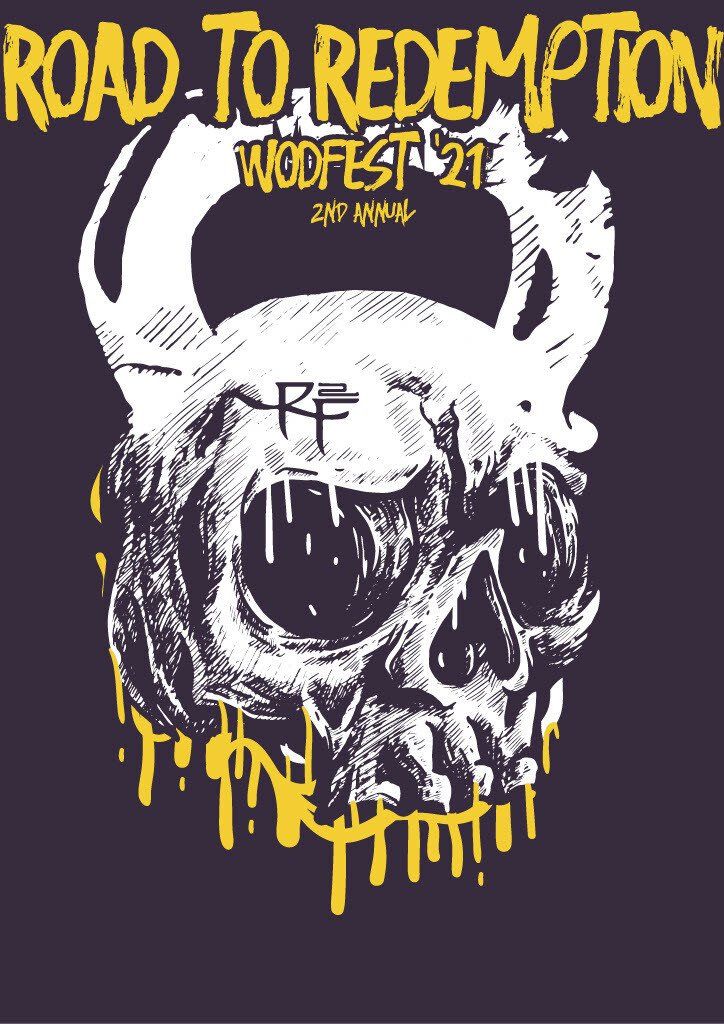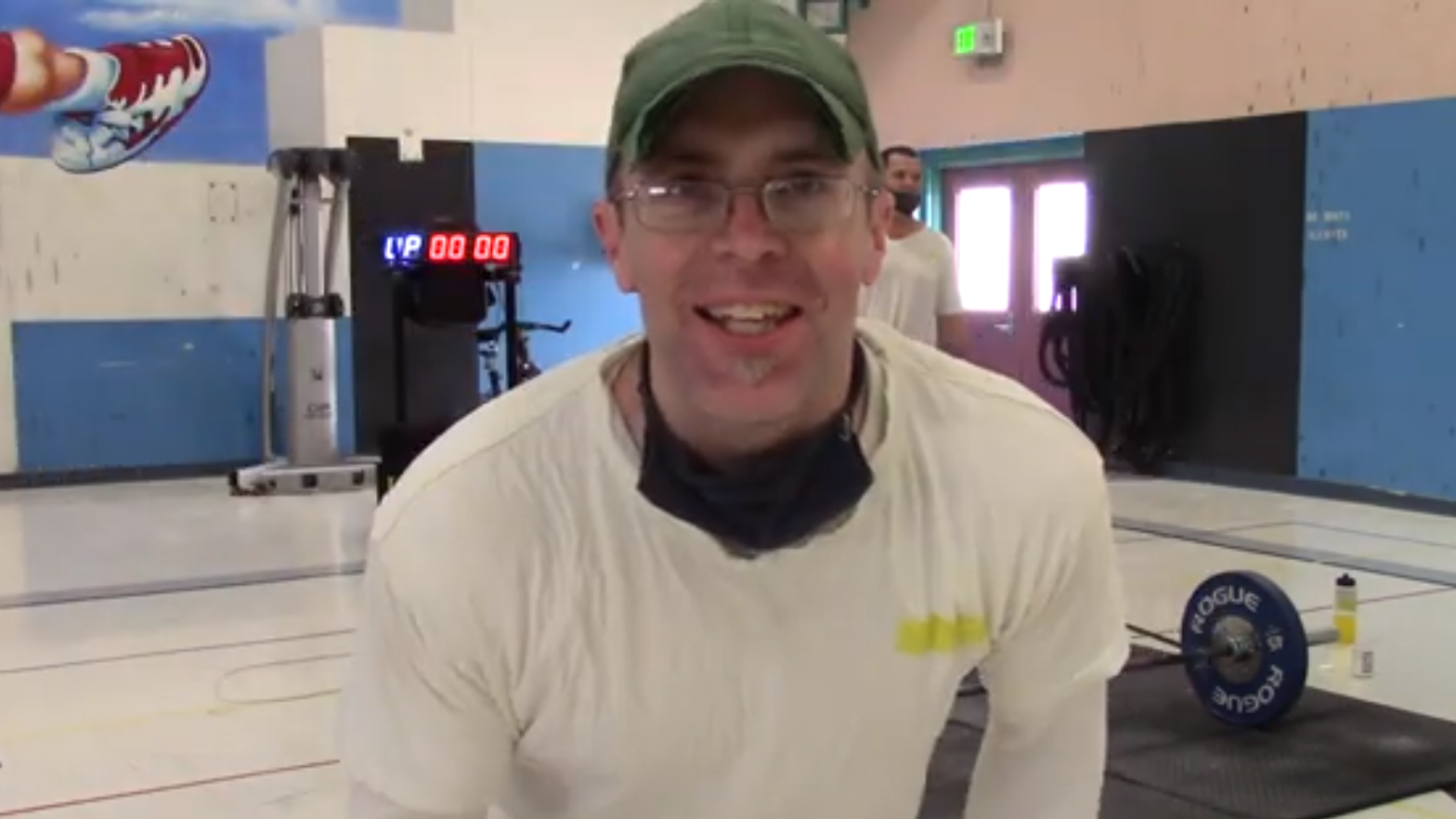Aaron Brill • January 27, 2021
Reflections on the Invitational

The very awesome Ivy H, one of the incredible athletes that made this event possible wrote the following about her experience. It literally moved me to tears when I first received it and again now as I reread it to post here. Those that were there will totally get it and for those that weren't, she captures that previously indescribable thing that we all felt. Thanks for writing this and letting me share it Ivy. Here it is:
The drive home was almost silent.
Fields as far as the eyes could see but sentences dropping off after just a few words. Erik and I struggling to get much out before we had to stop, voices cracking, throats tightening, unable to push out words past the swell of emotions and the tears raging through our now adrenaline-deficient bodies. A drastic juxtaposition to the lighthearted drive to Limon Correctional Facility earlier that morning.
The departure from Limon Correctional Facility was hard: heart wrenching and emotional, I’ve had hard goodbyes; I’ve had to leave places that I never thought I’d leave; I’ve had to say goodbye to friends that I knew I would probably never see again. This was harder -- I never expected to be inside a prison, and definitely never expected that walking out would be the hardest goodbye of them all.
On December 14, 2019, Limon Correctional Facility hosted a CrossFit competition, a fundraiser and a partner event that paired up a community member or “outsider” with an inmate from Limon Correctional Facility. After talking myself into and out of the idea of participating several times, I decided to register myself as an athlete. I would be paired up with a male inmate, and we would compete together as a pair in four workouts over the course of about five hours.
Weeks leading up to the competition date were sprinkled with talks between my friend, Erik, and myself. He was also signed up to compete as an athlete. I felt better knowing I’d have him there even if we weren’t on the same team because truthfully, a big part of me was hesitant. But also excited. Anxious. Scared. Maybe even terrified.
Occasionally it came up in other conversations when people asked what I was doing over the weekend or what that event was that they saw me “like” on Facebook.
“It’s a CrossFit competition in a prison. I’ll be paired up with an inmate...to compete with as my partner,” I would say when they confoundedly asked, understandably, for clarification. Most people didn’t understand, or didn’t care, or maybe just didn’t know what questions to ask to help them understand.
Leading up to the event we got a few emails from Aaron, the organizer, with pre-event details. License ID number for security check. No phones, smartwatches, or FitBits. No personal jump ropes. No bags or backpacks. We were told what to wear: no tight-fitting clothing, for example. Men had to keep their shirts on. Clothes couldn’t have logos or references to drugs or alcohol. No hunter green (that’s the inmate color); Women couldn’t wear tank tops, shorts, or leggings.
Got it.
We got our partner and heat assignments the day before the competition. I found my name as quickly as I could on the spreadsheet. Then I looked at my partner’s name, and before I knew it his name was in my google search bar, followed by several links to his information. I couldn’t find much … only a photo and his bio on a “Write a Prisoner” website, stating that he was on vacation in Colorado in 2013 and got into some trouble and that he had been at Limon Correctional ever since. It made it real. The nerves kicked in. Erik’s partner was 6’2”, in for life, clad in face tattoos and a scared-straight visage. A few minutes after getting our assignments, Erik texted me.
“Ives, I’m not so sure that I still want to do this.”
“Give him a chance,” I replied, knowing damn well that while I was saying it to him, I really meant it for myself.
The Redemption Road Invitational: First Annual.
The Morning of the competition, I had no expectations. Not that they were low, they just … weren’t there. I had no frame of reference for what it would be like to even walk into a prison, let alone interact with a group of inmates. Would we be allowed to sit with them? Would they have to wear different clothes? What will the gym look like? I just had no idea. Bluegrass music was playing as we drove through the brown fields of eastern Colorado. It seemed fitting. Somehow the picking on the strings was loud enough to cover up the sound of my heartbeat, a thump-thump that felt like it could have exploded my chest right then and there.
We parked and double checked that we followed Aaron’s instructions by not bringing in anything that could cause a problem. Then we walked in. After changing into our new competition shirts, designed and screen printed by shops inside of Limon Correctional, we traded in our IDs for visitor badges and walked through the metal detector, waiting in a group of about 20 to be escorted out of the main entry, through several gates and fences into the prison. Next stop: check in athletes. Damien was the first inmate we met. Dressed in prison-issue shorts and a “smoked paprika” colored shirt that designated him as an event volunteer, he watched us come through the doors, ear-to ear-smile and asked our names to check us in. Aaron briefed us on a few more logistics, Damien led us through a few spiritual words while we kept our heads down, and we walked into the gym.
We put our stuff upstairs in a room guarded by a correctional officer (CO) at all times then came downstairs into the gymnasium, a basketball court with concrete bleachers on one end and blue, freshly welded free-standing pull up rigs on the other side. We went to our assigned “lanes” where we’d be working out and met our judges. Our judges were inmate volunteers, also wearing smoked paprika, of all shapes, sizes, and colors. Conversation flowed like we were at the grocery store waiting in line to check out. Easy. Unrestricted. Smooth. In the first 5 minutes, the judge in my lane disclosed that he’d been at LCF for a while and had a long way to go before he saw daylight. Without any pressure, he revealed that he got put in for killing the man who he caught molesting his 3 year old daughter.
“I’d do it 1,000 times over,” he said.
If there was a time to start getting scared, this would have been it. But suddenly, oddly, I felt safer. That was my first dose of reality. Not the reality that I was about to be surrounded by 50 inmates, offenders, violent and non violent criminals, gang members, or even murderers. But the reality that I was surrounded by these individuals, just people, who were going to share the stories of their lives with me. These incredible, personal, unique stories of the paths that led them to where they were standing that day.
Our partners started to filter in. They were wearing the same shirts as us - black shirts with big golden letters. Suddenly, there was no distinction between who was “in” and who was “out”. We were told to find our partners based on our name tags that showed our last name and our team number. I met my partner after a few minutes of wandering around the gym. We shook hands, our smiles mirrored across the embrace. I don’t really remember what our first few words were. He was shy. I could tell he and a lot of the other guys were hesitant --almost shrunken into themselves -- maybe scared of what we were going to think of them, maybe nervous for the competition. I wasn’t sure. The initial energy in the gym was, for lack of a better word, slow. Uncertain. Less than 10 minutes later, I forgot completely where I was and who I was surrounded by. It felt normal -- like I had been here hundreds of times before. Making conversation with the person in front of me, in the bathroom line, or next to me on the bleachers. Contrary to what I had drawn up in my mind, there wasn’t a moment where I felt unsafe or targetted, or like I was being looked at differently because I was a female or because I was an outsider.
Before we knew it, music filled the room and the workouts started. Who was who? It would have been impossible to know had it not been for the prison-issue white sneakers worn by the inmates. But it didn’t matter. Everyone was cheering, everyone was high-fiving, everyone was sweating, and everyone was laughing. Everyone was happy. My partner and I started learning more about each other. Everyone there called him “Virginia” -- a reference to where he lived before Limon, to where his three kids currently live, to where he had a career as a plumber and good friends and good life that, if all goes well, he’d be going back to in May.
In the last five years, I’ve done around 15 Crossfit competitions. Most of them feel the same: high energy, loud music, and hard workouts, pretty much what one would expect. But I have never felt a sense of camaraderie so strong as I did in Limon. Nobody was there to win. Nobody was there to prove that they were better, or to stand on a podium, or to be recognized as the best. In fact, I’ve never wanted to be beat so badly in my life -- to see someone else up on the boxes at the end of the day, holding the #1 spot. Don’t get me wrong, we were all pushing. It was a competition, after all. And I’d be lying if I said that I didn’t want to do better than the person next to me -- I think that’s why people love Crossfit after all. But I wanted to do well for Virginia, not for myself. Seeing and feeling his excitement grow as we held on to a top spot throughout the day was all the reason I needed to give everything I had into every second. And because of the immense, overwhelming desire to see others succeed, it created this incredibly unique thing -- a completely selfless competition. An oxymoron really. Something that is nearly impossible to verbalize and most definitely impossible to recreate.
To see everyone surrounding the last group trying to finish, the whole room shouting cheers of encouragement and counting down their reps until they nearly collapsed onto the ground...that would help explain what it was like. To have heard the inmates cheering on the correctional officers and the correctional officers coaching up the inmates and the warden encouraging them both...that would help explain what it was like. To have experienced the sense of pride and pure joy in these men who probably haven’t felt those emotions in years...that would help explain what it was like. To have felt the genuine, contagious, familial love between the people in that gym...that might help too, but still falls short of what that day really was.
In harsh contrast with other competitions that I’d done, this day ended entirely too abruptly. Usually I can’t wait to be done, the thought alone of a warm shower and a soft bed drive me straight home to recover then continue on with my normal, comfortable life the next day. But suddenly, as things started wrapping up on this day, my anxiety that at the start of the day had stemmed from walking into a prison and interacting with offenders, was now coming from a place of not wanting to leave. We were killing time before the podium ceremony started, signing the backs of each other's shirts and getting silly pictures with friends, both new and old. Practicing muscle ups and dancing and goofing around and showing off and socializing as if we’d all done this with each other a million times before. All the while, all I could think about was that I got to go home, and they didn’t. It was burning through me.
After the podium ceremony and a few very emotional speeches, Erik and I were both at a loss for words when saying goodbyes -- the typical “see you soon” or “have a good one” seemed irrelevant and insignificant in that moment. We’d spent hours talking to these people who seemed just … like … us … some even my age or younger. As the music stopped, like clockwork, their matching shirts, some now with signatures of new friends, partners, and competitors, came off and were replaced by their inmate uniforms as if the whole day were just a fleeting dream. Some were still riding on the high of the competition, dancing and fraternizing until they were directed to leave. Others’ body language changed entirely as they were pulled back into reality. I struggled to actively fight back against my maternal instinct, compelling me to run and hug every single one of those men -- but I’m not sure I ever would have let go. I wanted to tell them that there are people who think they’re worth something. To make sure they knew that what they were doing in there to change their lives wasn’t going unnoticed. To let them know that there are people who want to get to know them and hear what sort of plans they have for their lives. People who see them and don’t see what they did but what they’re going to do and how they’re going to change the world.
This was so much more than a competition. The words for what this was don’t, in fact, even exist. Now, trying to write about it, the incredible inadequacy of words is, yes, a recognition of how special it was, but more importantly a glaring reminder that there is so much more that can come from this. I’ve never felt a fire lit so strongly in me as I did on that drive home -- never so many emotions in one moment.
When people ask me what I do for work or what my hobbies are, I try to avoid the term CrossFit, in an attempt to avoid the imminent eye roll or baseless lecture pointing out how expensive it is, how people get hurt, or any number of other claims and conjectures that are likely built on no actual knowledge or experience. There’s a bit of a stigma that has surrounded Crossfit. If anyone knows stigma, it’s these guys.
I started CrossFit at the 42nd affiliate in the world, an OG gym with rusty bars, no heat, and floors that were cleaned once a week if that. This “bare bones” Crossfit changed my life. When you take away the money, and the brands, and the heat, and leave the dust balls gathering in the corners and chalk prints on the ground, what you get is a community of people who just want to be there to become better. Better athletes, better partners, better moms and better dads, better police officers, better musicians - just better humans. When you take away the scoreboard and the expectations and the big names and the sponsorships, you get this incredible, powerful huddle of humans who are committed to their own success just as much as they are committed to the success of the person next to them. This competition reminded me of why I do what I do and why I fell in love with Crossfit.
This isn’t an article about Crossfit, though. Nor a journal about the time I worked out once in a prison. It isn’t a blog about fitness or an essay preaching second chances or a piece about how marginalized members of society are poorly judged. I do hope it encompasses a little bit of each of those, but mostly I just wanted to write. To write so that I don’t forget how I felt that day. I wanted to write to recognize, somewhere, that this program can change lives and it is powerful beyond measure. I wanted to write to remember that becoming uncomfortable is the only way to grow. To remember that most people are good people. To remember that everyone has a story. And to, most importantly, remind myself always how much the power of positive human interactions can lead to change.

We are hosting our 2nd Annual Road to Redemption WODFEST on Saturday, July 10th. This comp will be an amazing example of what this program is all about. The competition will be hosted at the Denver Police Academy and we have program participants from our affiliates inside the prisons coming to compete alongside the other competitors. This has never happened before and we are extremely excited for this groundbreaking event! Our goal with this comp is to continue to raise awareness for the Foundation, CF Affiliates inside the prisons as well as ways to continue to partner with the community. We would love to have you consider how you could be involved to support this event. Here are 3 ways to support this event: 1. Donate Swag for the Athlete Bags or Prizes for winners 2. Help Promote and Show up to help the day of the competition (here's the link to register to compete or volunteer) Flyer for promotion is attached 3. Give a monetary donation towards the Foundation - which directly supports to Affiliates inside the prison If you have other ideas on how to be involved in the comp, please let me know! THANK YOU for your interest and support in this work! We feel honored to have so many folks inspired to help this program!

The Following was written by Chris Harris, a Core Member and leader of the Limon RRCF program. He has attained his CrossFit Level 2 while 'inside' and is hugely impactful as a leader in the program. A Hierarchy of Integrity Redemption Road CrossFit is founded on the belief that redemption is possible and can be made available to every incarcerated person and that CrossFit is the perfect vehicle to change the culture of prison through mentorship, accountability, and community. Over the past four years we have been privileged to witness dozens of men (and now women) begin to make life altering changes in mind and body as they invest their time, energy, and attention to the pursuit of fitness through the application of CrossFit methodology. We have also watched as these same people have branched out into positive, pro-social activities outside the “Box”. As CrossFit trainers, we have found ourselves asking, “What is it that we are doing at RF2 CrossFit that is transcending the box and changing people in their everyday lives?”. We have also asked ourselves, “What is it about teaching and doing CrossFit that is changing us?”. We often hear about the black box of CrossFit in regard to the unique and sometimes inexplicable fitness results achieved through CrossFit training. What we are seeing at RF2 goes beyond fitness results. RF2 is developing its own black box of character development. It is transforming the hearts and renewing the minds of RF2 participants and as a result they are impacting the world around them in a fundamentally new way. We have come to believe through examining our own transformations that CrossFit instills and refines, sometimes consciously but, many times unconsciously, 9 Foundational Characteristics, which when applied to life outside the box, create paradigm shifts in prison culture previously thought impossible. The backgrounds and personal stories of the men and women of RF2 are as diverse and divergent as any community in the world, yet, the foundational characteristics which are being developed, applied, and refined are as common and necessary to the integrity of each individual as bumper plates to a box. The following is a brief(?) exposition of the 9 foundational characteristics: Grit – The mental strength to confront adversity with courage; fortitude; the ability to identify and confront an adverse condition with clarity and resolve. Grit is embodied by focused effort and a desire to work hard. A person possessing grit will maximize their talents and develop skills in a manner that will create an atmosphere of hard work and will inspire that mindset in those around them. GRIT IS HIGHLY CONTAGIOUS! Resilience – The ability to readily recover from and re-engage adversity; a willingness to continue after, or bounce back from, adversity. Adversity comes in many forms and is both unique to the individual and ubiquitous in society. The willingness to re-engage with an adversity after an initial encounter regardless of previous success or failure is the quality of resilience and a mark of the optimistic personality. Many incarcerated individuals have too often fallen short in this area and developing resilience can be a singularly transformative breakthrough. Accountability – The willingness to be held to a standard outside one’s self by others; an essential quality and necessary component of community. Accountability is working in concert with others to achieve a goal or objective, be it personal or collective. The value of being held to a standard by people who are committed to your success and are unwilling to compromise standards in the pursuit of that success is paramount to the development of a person of integrity. The other characteristics are magnified and intensified when developed in an atmosphere of accountability. A culture of accountability is created when empathetic people are willing and able to ask and answer tough questions in a demanding, transparent, compassionate, and honest environment. When high standards are set, realistic expectations are established, and achievements are acknowledged, trust develops and real growth and lasting change occur. Accountability is a two way street: all parties must desire to participate. While difficult to attain and maintain, the environment of accountability produces the very best of those who are blessed to experience it. Commitment – A sincere, steadfast, fixity of purpose. After purpose, commitment is the most comprehensive characteristic. The qualities of sincerity, steadfastness, and fixity of purpose are overarching qualities that direct and inform all other characteristics. Sincerity speaks to honest motivations without hidden agendas. Steadfastness speaks to perseverance and loyalty in any circumstance, Fixity of purpose speaks to a single-minded focus on the task at hand in the micro or macro. The demonstration and modeling of commitment by RF2 trainers and volunteers may be the first time some RF2 athletes have experienced this foundational characteristic. Endurance – The quality of long-suffering; patience in the face of adversity; the ability to stay the course; the willingness to persevere during adversity. Endurance is exemplified by a never quit, will do attitude. A person possessing endurance is resolute. Endurance is not something done. It is a quality possessed in the heart and applied to the life. Endurance is marked by consistency. Consistency is the alignment of values with actions. The enduring person maintains a life in which their values and actions are always in agreement. They are, at their core, non-contradictory. Endurance is the natural consequence of grit and is essential to the development of resilience. Humility – A confident mindset marked by a desire to develop and improve skill; responsiveness to coaching and correction. Humility is not weak, insecure, or uncurious. The humble person is confident in their ability to improve. They know that new techniques, approaches, methods, and ideas don’t threaten their existing competencies; they, instead, enhance and improve the talents and skills already possessed. The humble person is confident that the new and the old, in combination, will result in a more complete person, more equipped to, and more capable of, attaining any goal or objective. Humility is strength devoid of vanity: confidence without arrogance. This is not to say one cannot be boisterous, vocal, or demonstrative. Boldness does not indicate a lack of humility, and quietude does not indicate possession. The humble person embraces correction and coaching. Optimism – A general disposition toward the confident expectation of positive outcomes; a belief in the ultimate objective of purpose being served whatever the present circumstance. Optimism is NOT positivity. The characteristic of optimism is comprehensive in that it is unaffected by outcomes. There can be progress in failure. The optimist is able to view every circumstance as serving their overarching purpose, and if that purpose is constructed to serve others and founded on a standard that is external to one’s self, rests in the confidence that comes from believing that, no matter the immediate result, good will be achieved. Pessimism is the default mindset of the prisoner. It is a hedge against disappointment. The pessimistic mindset must be relentlessly confronted at every opportunity. A trainer can never allow pessimism to go unchecked. As it will spread like wildfire in a community predisposed to defeatist thinking. Negative results are opportunities for athletes to exercise humility and resilience, and for trainers to demonstrate empathy and reinforce the accountability culture so vital to personal growth and culture change. Purpose – The intended outcome that informs action; the overarching reason for being. Purpose answers the question, “Why am I here?”. The purposeful person engages in pursuits that serve their overarching purpose independent of any benefit they may receive. Should the purposeful person attain a position of leadership, it is for the benefit of others and is not based on thrill, self-interest, or glory. All endeavors ultimately serve this reason for being. It is often the case that those incarcerated have committed acts that are both self- destructive and self-centered. They may have had purpose in life, but that purpose was rooted and grounded in self. The accountability culture creates an environment that by its very nature brings individuals out of self and into community. A sense of belonging and acceptance coupled with unwaveringly high standards and open, honest communication produces a desire in the individual to seek purpose and meaning outside of themselves and their own self-centered interests. Purpose then becomes other-centered, pro-social, and meaningful. Trainers and volunteers at RF2 are examples of men and women of purpose and they manifest that purpose in word and deed. Finding meaningful purpose in life has the most powerfully transformative effect on any environment and very often leads to transformational change in anyone in proximity to that environment. Empathy – The quality of compassion for the condition of others; ensures humility and service to others in all endeavors. The trait of empathy is essential to the characteristics of purpose, humility and accountability. To have compassion for the condition of others is the ONE quality that ensures a purpose that lies outside one’s self. It allows the possessor to anticipate the needs of others and act in a compassionate manner to address those needs. When combined with humility, it creates a willingness to work with others in a collaborative, accountable environment that maximizes community. The effect of empathy is multiplied when shared by a community that is developing, applying, and refining the other characteristics. Compassion for others brings about the ability to hold others accountable in a manner that recognizes and values the unique individual without compromising the high standards and expectations of the community so critical to fostering meaningful change. Empathy elevates the worth of the individual while enhancing the integrity of the community. The theme of facing, enduring, and overcoming adversity is a constant in life. Adversity and dealing with it is something we all have in common. No one escapes adversity. Many of us are in prison because we failed to deal with adversity in an acceptable and healthy manner. CrossFit is proving to be a valuable tool in the effort to transform lives by exposing the athlete to adversity in a manner that allows repeated exposure without the negative consequences that would occur outside the box. Positive character traits begin to develop and reinforce one another, just as demonstrated by the CrossFit Safety Charter; mechanics, consistency, intensity. The 9 Foundational Characteristics are interdependent. No trait can stand alone. The maximal development of one characteristic requires the concomitant development of all the characteristics. The possession and application of all 9 Foundational Characteristics produces in the practitioner the quality of integrity. Integrity is defined as moral soundness, completeness; totality with nothing lacking. Integrity in the individual is prized in society and our goal is to produce people of integrity that will not only transform prison, but the world beyond in a way no one has previously thought possible. THIS IS REDEMPTION! Lives once thought beyond redemption, the cause of pain, sorrow, and suffering for so many, now transformed and impacting the world for good. This is Redemption Road CrossFit! We know that the dedicated men and women of Redemption Road Fitness Foundation and all the Redemption Road CrossFit affiliates are consistently engaged in exemplifying the 9 Foundational Characteristics. We are grateful to CrossFit, CrossFit Training, and the entire CrossFit community for recognizing and investing in our potential. The GRACE & HOPE displayed every day by Aaron Brill and the RF2 Board are examples for us all and their contributions to our growth and impact cannot be overstated. Special thanks to Eric O’Conner, Jason MacDonald, Nicole Gordon, Becky Harsh from CrossFit Beaver Menace, and Kurtis Bowler from CrossFit Rainier for their hands on training and Andrea Cecil for her eloquence. Thank you to all the DOC Headquarters and LCF staff and administrators who continue to facilitate our success. We at RF2 are committed to pursuing our purpose with GRACE & HOPE, providing others with opportunities to flourish. Chris Harris, CF-L2 Redemption Road CrossFit Limon & all the RF2 CrossFit Trainers



